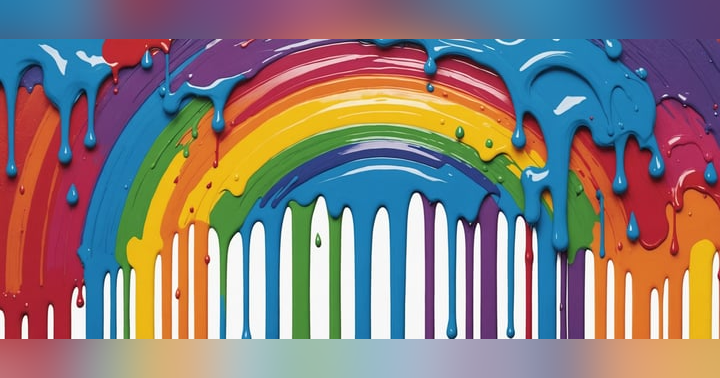True Allyship: Moving Beyond Performative Support for the LGBTQ+ Community

Understand Your Privilege and Do Your Research
The term ally gets thrown around often, especially during Pride Month. For many straight people, adding an ally sticker to their Facebook profile or waving a rainbow flag in June feels like enough. But when it comes down to true allyship, what does it actually mean? Can you be an ally just by accepting LGBTQ+ people and having queer friends, or does it require more?
Defining Allyship
Allyship is more than just showing up to a Pride parade or posting a supportive status on social media. It requires consistent action, support, and advocacy. According to Cheyenne Filipczyk, an ally and business owner, allyship means standing up for the LGBTQ+ community year-round, not just in June. It’s about supporting mental health resources for queer people, shopping at local queer-owned businesses, and most importantly, speaking up for equality.
The Cycle of Performative Support
Every June, we see a predictable pattern: corporations and straight allies show up to celebrate Pride. But when the parties are over, how many continue to advocate for the community for the rest of the year? LGBTQ+ issues often fade from mainstream attention, resurfacing only during major controversies. Unless you actively seek out news on queer-related topics, they rarely make headline news. This limited visibility makes it even more critical for allies to maintain their support beyond Pride Month.
What It Means to Be an Ally
According to ReachOut, an online mental health service, an ally is someone who stands up for, supports, and encourages the people around them. They advocate for equal rights for all, regardless of race, sexual orientation, gender, or religion. An ally should actively call out discrimination, fight for equality, and strive to make the world a better place for LGBTQ+ people.
GLAAD has also published a guide with ten ways to be an ally, highlighting the importance of:
- Listening and being open-minded
- Including LGBTQ+ friends in your social circles and not assuming everyone is straight
- Challenging offensive jokes and comments
- Confronting your own biases and prejudices
- Defending your LGBTQ+ friends against discrimination
- Advocating for dignity and respect for all people, regardless of gender or sexual orientation
- Speaking out against LGBTQ+ misrepresentation in the media
True allyship goes beyond being passive. It requires you to be actively engaged, not only when it’s convenient or celebrated. As Cheyenne shared, her experiences growing up made her realize early on that someone has to be in the corner for marginalized people, and that no one should be made to feel less than for who they love or how they identify.
LGBTQ+ Issues in the Media: A Missing Dialogue
It’s not just a lack of media coverage that leaves LGBTQ+ issues overlooked. During election cycles or major political events, queer issues often fall by the wayside. For example, during the 2020 election, there was very little attention given to LGBTQ+ issues. A viral meme during the vice-presidential debate that year even pointed out how the fly that landed on Mike Pence’s head got more air time than LGBTQ+ topics.
With so much going on in the world—from pandemics to social justice movements—LGBTQ+ issues often get lost in the noise. This serves as a reminder that allies must stay informed, even when mainstream media isn’t highlighting these stories. It’s up to each of us to seek out queer-focused news outlets like The Advocate or Queerty, which consistently cover issues that mainstream outlets often ignore.
Taking Action vs. Token Gestures
It’s easy to participate in the fun and vibrant aspects of Pride. Parades are lively celebrations, and who doesn’t love a good party? But allyship is more than just showing up once a year to celebrate the LGBTQ+ community. We often see people at Pride events who are happy to put on a rainbow shirt and say, “Happy Pride from your favorite ally.” Yet, that’s not true allyship—especially when they aren’t actively engaging with or supporting the community the rest of the year.
Being an ally isn’t about optics; it’s about meaningful action.
Real allyship requires doing the hard work—whether that means speaking up when you hear homophobic remarks, supporting LGBTQ+ causes year-round, or educating yourself on issues affecting the community.
For instance, a straight ally may think they’re supporting the community by consuming content that aligns with their beliefs, but they could be limiting themselves to only hearing one perspective. It’s easy to get caught in an echo chamber where your beliefs are validated without ever being challenged. True allyship involves seeking out diverse perspectives, even if they make you uncomfortable.
Research Before Reacting
In today’s age of social media, misinformation spreads rapidly, and it’s easy to react emotionally to headlines or memes that affirm your worldview. As an ally, it’s important to understand that being well-informed strengthens your ability to support the community effectively. It’s not just about believing everything you read; it’s about doing the homework to ensure you’re advocating based on facts, not misinformation.
Allyship also involves sharing what you’ve learned with those around you—particularly people who may not be aware of the struggles the LGBTQ+ community faces. Knowing an LGBTQ+ person can significantly change someone’s perception of the community. It brings the struggles closer to home and personalizes the issues. This connection can help people see beyond the headlines and understand the real-life implications of discrimination, from workplace issues to societal pressures.
Allyship Isn’t About Changing Minds—It’s About Being Present
One of the misconceptions about being an ally is that you need to convince everyone to agree with you. But being an ally doesn’t mean you have to change everyone’s mind. It’s about finding people who are willing to listen and engage in meaningful conversations. You don’t need to force your views on others; instead, focus on creating spaces where dialogue can happen. Sometimes, just being open and sharing your perspective can spark a change, even if it doesn’t happen immediately.
Beyond June: Year-Round Support
It’s easy to celebrate Pride when everyone else is doing it, but what happens after the celebrations end? True allyship means taking consistent action throughout the year. What are allies doing beyond June? Are they staying informed about LGBTQ+ issues, signing petitions, donating to queer organizations, or confronting homophobia in their everyday lives?
Pride may be a celebration, but it’s also deeply rooted in the fight for LGBTQ+ rights and equality. By showing up only for the parade and party, “allies” miss the point. Allyship means being there when it matters most, even when it’s uncomfortable or inconvenient.
A Lifelong Commitment
At the heart of allyship is recognizing and confronting privilege. Straight people often navigate the world without fear of discrimination based on their sexual orientation. Acknowledging this privilege and using it to support LGBTQ+ voices is essential.
Being an ally is not a label you can wear once a year; it’s a commitment to continuous action and learning. Even though we’ve seen progress in many areas, the struggle for equality is far from over. The work doesn’t stop with understanding privilege—it involves using that privilege to uplift marginalized voices.
For LGBTQ+ people and their allies, it’s vital to stay engaged with these issues beyond the headlines. Whether it’s supporting queer-owned businesses, advocating for mental health resources, or challenging prejudice in your own social circles, allyship must be an ongoing, active commitment.
In the end, true allyship is about standing beside the LGBTQ+ community—not just during the fun and festive moments, but also in the quieter, more difficult times when real change happens. So, as we reflect on what it means to be an ally, ask yourself: Are your allies showing up consistently, and are they truly fighting for the equality we all deserve?
And remember. Every day is all we have, so you've got to make your own happiness.
For more information on this topic, listen to Episode 16. Being an Ally (with Cheyenne Filipczyk).
Tune into your favorite podcast player every Tuesday for new episodes of A Jaded Gay.


















